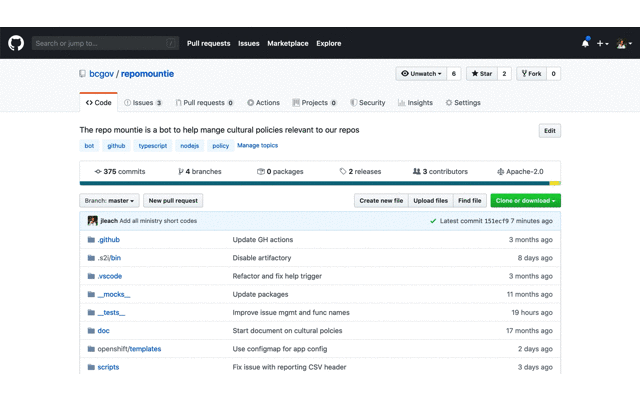The hnclient-v2 application will receive an HL7v2 message over plain TCP and forward it to a secure endpoint over HTTPS with an OAuth2 access token (retrieved using the OAuth Client Credential Grant).
This project also includes applications that mock-out dependencies or provide additional functionality:
mock-point-of-service: a point of service application that sends an HL7v2 message over MLLP.renew-client-auth-certs: a tool to renew the jks file used to authenticate to Keycloak an retreive an access token. The functionality of this tool is also built into hnclient-v2 but in that case will only run once the certificate has reached 30 days from expiry.
Prerequisites:
- Apache Maven 3.6.1+
- Java 11
By default, hnclient-v2 and our Keycloak development server are configured to use "Signed JWT" client authentication. To use our Keycloak development server with HNClient:
- Retrieve the
moh-hnclientJKS file from KeePass in the IAM directory. - In
hnclient-v2'sapplication.propertiesfile, setjks-file=JKS_FILE_LOCATION. - Set
MOH_HNCLIENT_KEYSTORE_PASSWORDas an operating system environment variable. The password is also in KeePass on themoh-hnclientrecord. - In the
hnclient-v2application.propertiesfile, ensure thatclient-auth-type = SIGNED_JWT.
On startup hnclient-v2 will automatically renew the JKS file and upload the public key to keycloak if the certificate is within 30 days from expiry. (11 months old based on the codes current configuration). When this happens the new key will need to be stored in KeePass so that other developers can get the new key. If you are testing or modifying this feature be sure to use a different client in Keycloak so that you don't change the key for the moh-hnclient client in Keycloak that other developers may be using. To do this you will need to update the JKS properties in application.properties and the keystorePassword in route.java.
hnclient-v2 also supports "Client ID and Secret" client authentication. To use it, the Keycloak server must be configured to use "Client ID and Secret".
- Go to the Keycloak development server and look-up the client secret for
moh-hnclient. - Set
MOH_HNCLIENT_SECRETas an operating system environment variable. - In the
hnclient-v2application.propertiesfile, ensure thatclient-auth-type = CLIENT_ID_SECRET.
In order for hnclient-v2 to get access tokens from Keycloak, it needs to trust the Keycloak development server, which uses a self-signed certificate. Download the certificate from https://common-logon-dev.hlth.gov.bc.ca and add it to Java's truststore (e.g. "C:\Dev\AdoptOpenJDK11\lib\security\cacerts").
NB: The hnclient-v2 application requires the HNS-ESB application to be running so that it has somewhere to send messages to. The hnsecure- properties in the application.properties are used to specify the endpiont of the HNS-ESB.
hnclient-v2 can be run from the command line:
cd hnclient-v2
mvn compile camel:run
After hnclient-v2 is running, you can send a message using mock-point-of-service:
cd mock-point-of-service
mvn compile exec:java
The IAM project is evaluating using an API Gateway (Kong) between HNClient and HNSecure, which would implement the architecture shown here:
In production this would be the DataBC API Gateway, powered by Kong. To set-up a local Kong instance for development, I recommend kong-vagrant. Additional instructions on setting-up kong-vagrant are in the moh-iam-kong-plugin repo.
Create a service that sends requests to HNSecure:
# 10.0.2.2 is the default IP for the Kong host machine inside VirutalBox used by kong-vagrant
$ curl -i -X POST \
--url http://localhost:8001/services/ \
--data 'name=hnsecure' \
--data 'url=http://10.0.2.2:9090/hl7v2'
$ curl -i -X POST \
--url http://localhost:8001/services/hnsecure/routes \
--data 'paths[]=/hl7v2'
Add the custom plugin from the moh-iam-kong-plugin repo:
$ curl -i -X POST \
--url http://localhost:8001/services/mockbin/plugins \
--data 'name=myplugin'
Note that the kong-plugin-jwt-keycloak plugin is available on luarocks, but the custom plugin must be built and installed manually. Find instructions on the Kong website.
Install and add the Keycloak plugin:
luarocks install kong-plugin-jwt-keycloak
curl -X POST http://localhost:8001/services/hnsecure/plugins \
--data "name=jwt-keycloak" \
--data "config.allowed_iss=https://common-logon-dev.hlth.gov.bc.ca/auth/realms/moh_applications"
You could also import the configuration file using decK.





